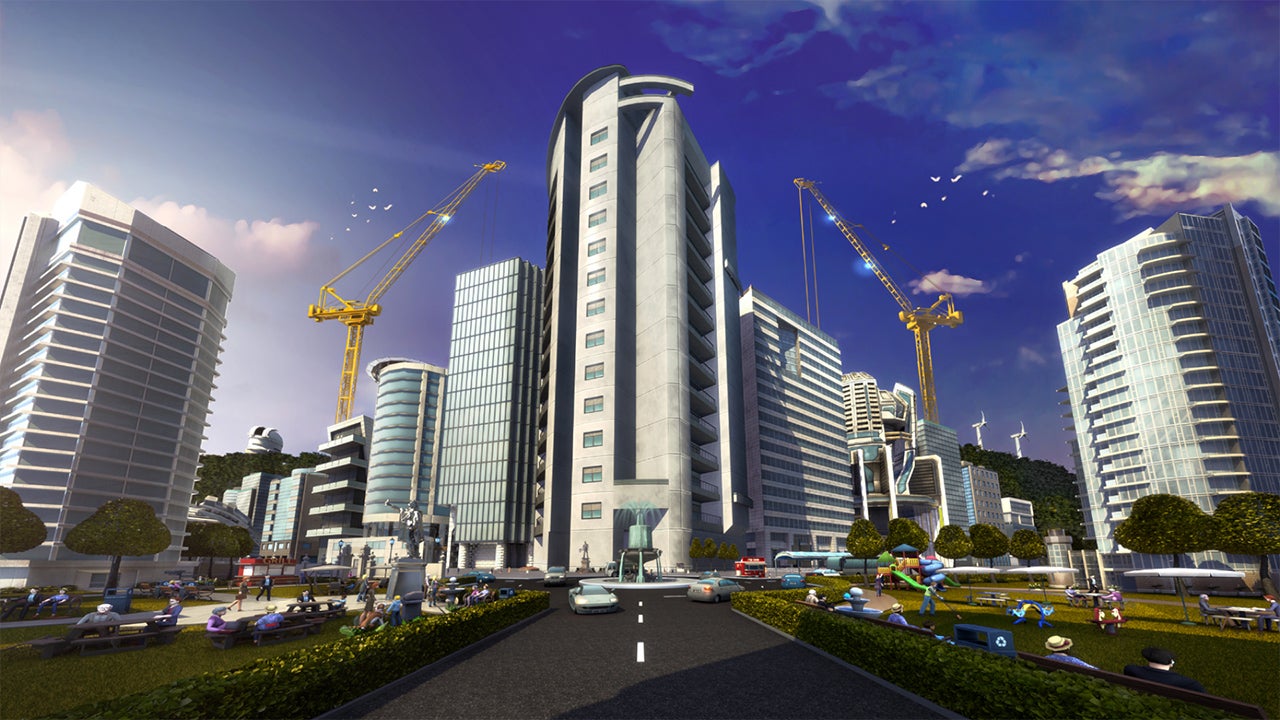Cities: VR Review – IGN
In the right hands, I believe any genre can work in VR – and Cities: VR is evidence to support that belief. Not every feature of its more complex elder sibling, Cities: Skylines, fits but playing a mayor with near-omnipotent architectural abilities and creating a new urban metropolis remains fun, feeling natural and surprisingly intuitive.
Bear in mind that this isn’t Cities: Skylines with a VR mode; Fast Travel Games has built a fresh adaptation for Meta Quest 2 that places you inside this bright and colorful world. Like Skylines, Cities: VR lets you control every major aspect of city planning without getting bogged down in the smaller details. You can just plan your city without worrying about every minor detail, choosing from one of nine maps. Starting from an out-of-bounds highway, you’ll begin laying down roads and selecting buildings to accompany them. From residential homes to basic utilities, there’s a gentle learning curb based around milestones, which unlock new facilities as the population increases. It’s effective at teaching you city management as if you can’t keep citizens happy, they simply won’t stay.
Prioritizing commercial and industrial zoning over residential means you won’t have the necessary staff to keep factories afloat, but doing the opposite creates high unemployment. Should you need higher skilled workers to fill these roles, invest in education. Are citizens complaining about a high crime rate? Better build a police station, people won’t remain where they don’t feel safe. If you’d prefer an easier time or feel like being creative, unlimited money can be activated when starting a new city. Milestones can also be shut off, offering more advanced facilities like nuclear power stations immediately.
Then we come to everyone’s favorite subject, taxes. As the god mayor, you’re responsible for setting tax rates for different institutions and zones, alongside how much money’s getting invested in public services. This requires a flexible approach, so adjust these accordingly to keep citizens happy and – assuming you’ve not activated unlimited money – avoid public finances running into the red. Book balancing is essential and if you’re struggling, you can take out up to three loans at once, each holding different repayment schedules.
“
I’m no expert on infrastructure planning – that became clear when I kept creating cities based around absurd road layouts – but building a fully functioning city was fun. However, compared to Skylines, there isn’t much building space. You can’t expand a city beyond one tile, which is x kilometers long, and for those with grander designs this might feel considerably limiting. So it’s all about carefully planning with the space that you have, but if you make mistakes, those can be quickly erased with the magical bulldozer that refunds some of your investment in the process, so it’s not all bad.
Cities: VR just doesn’t have the scope Skylines does, likely to better accommodate the Quest 2’s hardware limitations, so it serves more as an entry point to the series than a real extension of it. Major features like terrain editing and natural disasters aren’t included, or at least, not at launch. Cities: VR feels both more streamlined and more restrictive than its predecessor at once, so it’s a shame to lose certain aspects, but considering the many, many features it does include, and the advantages of VR, calling it barebones doesn’t feel accurate. As you’d expect, managing a city is a lot more immersive than sitting in front of a TV. You can’t walk around town like a citizen, unfortunately, but there’s fun in dipping down to the surface to see daily life unfold in front of you, even if vehicles sometimes clip through each other.
“
The controls feel good, too. Movement and construction options are easy to access at any time. It works well but if you’re after precision, aiming where buildings are built can be a little fiddly. Cities: VR lets you individually fill out empty zoning squares by clicking on them, even if you’re far out, but the very nature of motion controls means you’ll need a steady hand. If that’s not a concern, you can aim your controller like a paintbrush to quickly ‘brush’ over squares like a canvas, or hit the ‘fill’ option to immediately fill out that empty zone, so it’s never a major problem.
One benefit of the fact that you’re never actually walking the streets you’ve laid down is that you don’t have to worry about getting nauseous if you’re sensitive to that. Grab yourself a chair and get comfy. But Cities: VR does have some comfort options. There’s adjustable snap turning for the camera, alongside a vignette filter that shadows the screen’s border when moving.
My only real complaint is that the graphics look plain. Cities: Skylines is seven years old but the Quest 2 simply doesn’t have the horsepower to keep up. Environmental designs are washed out and lacking finer details, while buildings seem distinctly low res. It doesn’t deter much from gameplay but I can’t deny these graphics left me wanting the ability to play Skylines’ cities from this point of view.
Check out our Latest News and Follow us at Facebook
Original Source







